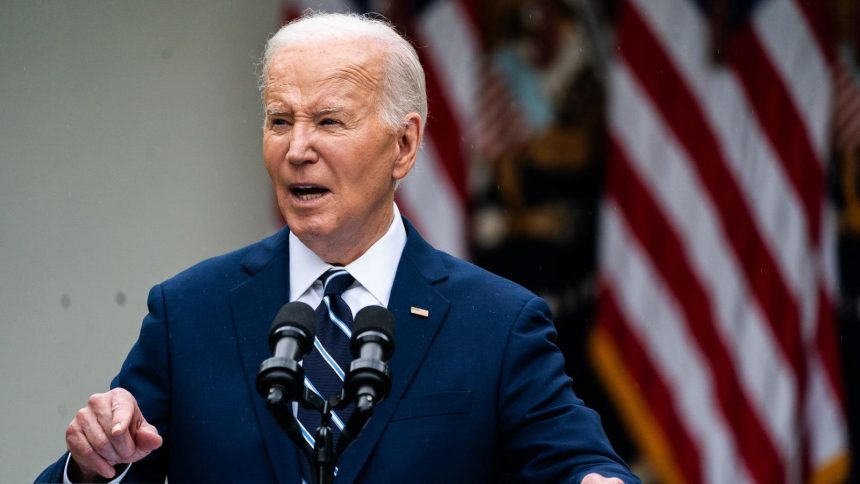Millions of borrowers who have experienced accrued or capitalized interest may get student loan forgiveness starting this fall under a proposed Biden administration plan. Borrowers who make $120,000 or less would see the most significant relief.
The plan, if enacted, is part of a broader Biden initiative designed to enact loan forgiveness for millions of borrowers who meet certain criteria. The plan targets certain groups of borrowers for relief. And those who have watched their student loan balances increase over time due to runaway interest are at the forefront of this proposal.
With federal student loan interest rates set to reach record highs this summer, debt relief based on interest accrual would be welcome news for many borrowers. Here’s a breakdown.
Ballooning Student Loan Balances Due To Accrued Interest
Many borrowers have watched their student loan balances increase substantially over time, even while they have remained in good standing (and often while making payments). There are several reasons for this phenomenon:
- The vast majority of federal student loan debt is “unsubsidized,” meaning the government does not cover interest during in-school enrollment and post-graduation grace periods periods. As a result, most borrowers end up owing more than what they originally borrowed by the time they start making payments.
- Certain repayment plans can leave borrowers underwater when it comes to interest accrual. Graduated repayment plans start off as interest-only for the first few years, and borrowers may make significant payments that ultimately don’t bring the balance down at all. Millions of other borrowers enrolled in income-driven repayment plans may have even seen their balances increase over time if their payments based on income haven’t been high enough to cover all the accruing interest.
- Interest typically has accrued on most federal student loans during periods of deferment and forbearance. Many borrowers were steered into these programs when struggling with their payments, without being told of other options (like income-driven plans). These payment postponement programs can have catastrophic consequences for interest accrual.
- To make matters worse, historically certain events can trigger interest capitalization, where accrued interest gets tacked onto a loan principal balance. This can have a compounding effect, where interest accrues on interest. Numerous events — such as leaving a forbearance, changing repayment plans, or failing to recertify income for an IDR plan — would result in capitalization.
Student Loan Forgiveness For Borrowers Underwater On Interest
Under Biden’s proposed student loan forgiveness plan, many borrowers would see partial or complete interest relief if their balances have grown due to interest accrual.
Under the proposal, all federal borrowers could get up to $20,000 in student loan forgiveness if they have accrued or capitalized interest since entering repayment.
But lower-income borrowers could get even more relief. According to the proposal, single borrowers — or married borrowers who file taxes separately from their spouse — could get complete student loan forgiveness of their accrued or capitalized interest if they make $120,000 or less per year annually and are enrolled in an IDR plan, like Biden’s new SAVE plan. Borrowers who file taxes as “head of household” could get the same relief, but they would need to make $180,000 or less per year. And married borrowers who file taxes jointly with their spouse would be eligible if they make $240,000 or less.
Biden Student Loan Forgiveness Plan Could Benefit Other Groups
Loan forgiveness for borrowers who have experienced accrued or capitalized interest is just one element of Biden’s multi-part new debt relief plan.
The initiative, which is being developed under the Higher Education Act, would target four additional groups for relief. These include borrowers who are eligible for existing student loan forgiveness plans but haven’t enrolled or applied; those who first entered repayment at least 20 or 25 years ago; borrowers who attended institutions that lost financial aid eligibility; and people experiencing significant hardships.
The Education Department published draft regulations for the first four categories of borrowers — including those who have experienced runaway interest — last month. A public comment period is currently set to close this week, after which the department will publish the “final” version of the regulations, likely this summer. Meanwhile, officials are expected to release draft regulations on the hardship category soon.
Biden administration officials are targeting this fall for implementation. If the Education Department has sufficient data, much of the loan forgiveness could be enacted automatically, without borrowers needing to formally apply. But for some borrowers — particularly those experiencing hardship — the department will likely require an application. Regardless, anticipated legal challenges and the outcome of the upcoming presidential election could result in delays, or the program getting blocked entirely.
Federal Student Loan Interest Rates Reach Record Highs
The proposed student loan forgiveness for accrued interest comes as federal student loan interest rates are set to reach record highs.
Interest rates for federal student loans are based on the high yield of the 10-year Treasury note at auction, a process established through Congressionally-enacted statute. Following the next auction, federal student loan interest rates are expected to increase by around 1%, reaching 6.53% for undergraduate federal Direct Stafford loans, 8.08% for graduate Direct Stafford loans, and over 9% for federal Direct PLUS loans issued to parents and graduate students.
Importantly, these interest rate increases will only impact new federal student loans for borrowers attending school. Most federal student loan interest rates are fixed at the time of disbursement and don’t change with market conditions. Interest rates for federal Direct consolidation loans are also independent of market conditions, and are based on the weighted average of the rates of the underlying loans being consolidated, rounded up to the nearest eighth of a point.
Other Student Loan Forgiveness And Relief Associated With Interest Accrual
Meanwhile, the Biden administration has implemented other reforms designed to provide relief to borrowers who are experiencing interest accrual.
The new SAVE plan — Biden’s newest IDR option — effectively provides student loan forgiveness of any interest that exceeds a borrower’s monthly payment. This does not reverse any past balance growth associated with negative amortization, but will prevent a borrower’s balance from increasing any further due to that phenomenon.
Last year, the Biden administration also enacted regulatory reforms to remove several triggers for interest capitalization, such as leaving a forbearance or certain IDR plans, defaulting, or failing to update income information. This does not stop interest from accruing, but will reduce the compounding effect associated with interest capitalization that can lead to significant balance increases over time.
Read the full article here
















